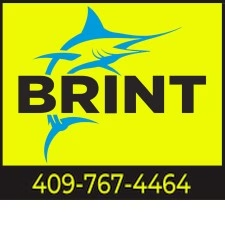Fishing
The Bolivar Peninsula is a haven for anglers of all skill levels. Its diverse fishing environments—from surf and jetty fishing to bay and offshore opportunities—offer a rich array of species and experiences. This guide provides insights into the best fishing spots, types of fishing, target species, optimal fishing times, recommended bait, essential gear, and licensing requirements to help you make the most of your fishing adventures on the Bolivar Peninsula.
Best Fishing Spots
Surf Fishing at Crystal Beach: With 27 miles of accessible shoreline, Crystal Beach is ideal for surf fishing. Anglers can wade into waist-deep waters on the second sandbar to cast lines for species like speckled trout, redfish, and flounder. The summer months, when green water reaches the beach, are particularly productive.
North Jetty: Located at the end of 17th Street off Highway 87, about two miles east of the ferry landing, the North Jetty extends nearly a mile into the Gulf. This renowned spot attracts anglers targeting a variety of species, including redfish, speckled trout, and sheepshead. The jetty’s structure provides habitat for numerous fish, making it a popular destination year-round.
French Town Road: French Town Road is a hidden gem for fishing enthusiasts on Bolivar Peninsula. Located near the Galveston Ferry landing, this spot offers access to calm waters ideal for catching redfish, speckled trout, and flounder. With its quiet surroundings and scenic views, French Town Road is perfect for a relaxing day of fishing away from the crowds. Don’t forget your bait and tackle for this local favorite!

Types of Fishing
Surf Fishing: Involves casting from the shoreline into the surf zone. It’s accessible and requires minimal equipment, making it popular among both locals and visitors.
Jetty Fishing: Fishing from the jetty allows access to deeper waters without a boat. The rocky structure attracts various species, providing excellent opportunities for anglers.
Bay Fishing: Exploring the calmer waters of East Galveston Bay can be done via boat or kayak, targeting species like flounder, redfish, and speckled trout.
Local area fishing guides can be found at the link below:
Common Fish Species
Sheepshead: Often caught around the jetty rocks, known for their distinctive teeth and fight.
Speckled Trout: Abundant year-round, especially during the summer months in the surf.
Redfish (Red Drum): Common in both surf and bay areas, with larger “bull” reds appearing in the fall.
Flounder: Typically found in the bay and near the jetties, especially during their fall migration.

Optimal Fishing Times
Seasonal Considerations:
Spring (March-May): Ideal for speckled trout and redfish as waters warm.
Summer (June-August): Surf fishing peaks for speckled trout; early mornings and late evenings are best to avoid heat.
Fall (September-November): Redfish and flounder are abundant, with flounder migrating through passes.
Winter (December-February): Fishing slows but can still yield redfish and sheepshead near structures.
Daily Timing: Early morning and late evening hours are generally the most productive, coinciding with cooler temperatures and increased fish activity.
Recommended Bait
Live Bait: Live shrimp, mullet, and croaker are highly effective, especially for speckled trout and redfish.
Artificial Lures: Soft plastics, spoons, and topwater plugs can mimic baitfish and are useful when live bait is unavailable.
Fishing vs. Catching
The adage “there’s a difference between fishing and catching” highlights that while fishing is the act of attempting to catch fish, catching refers to the successful capture. Factors such as weather, tides, and fish behavior can influence success. Patience, persistence, and knowledge of local conditions are key to turning fishing into catching.
Essential Gear and Equipment
Rod and Reel: A medium-action rod with a compatible reel is versatile for most inshore species.
Tackle: Include a variety of hooks, weights, and leaders to adapt to different fishing scenarios.
Waders: Useful for surf fishing to access deeper waters comfortably.
Cooler: To store your catch and keep it fresh.
Safety Gear: Life jackets, especially when fishing near jetties or from a boat.
Licensing Requirements
Anglers aged 17 and older are required to have a valid Texas fishing license with a saltwater endorsement. Licenses can be purchased online through the Texas Parks and Wildlife Department or at local retailers. Ensure you are familiar with current regulations, including size and bag limits, to promote sustainable fishing practices.
Fishing on the Bolivar Peninsula offers a rewarding experience, whether you’re a seasoned angler or a novice. By selecting the right spots, understanding the local fish species, and equipping yourself properly, you can enhance your chances of a successful and enjoyable fishing adventure.
If fishing or catching are not necessarily your thing, give your hand at crabbing.
Find out more below:




